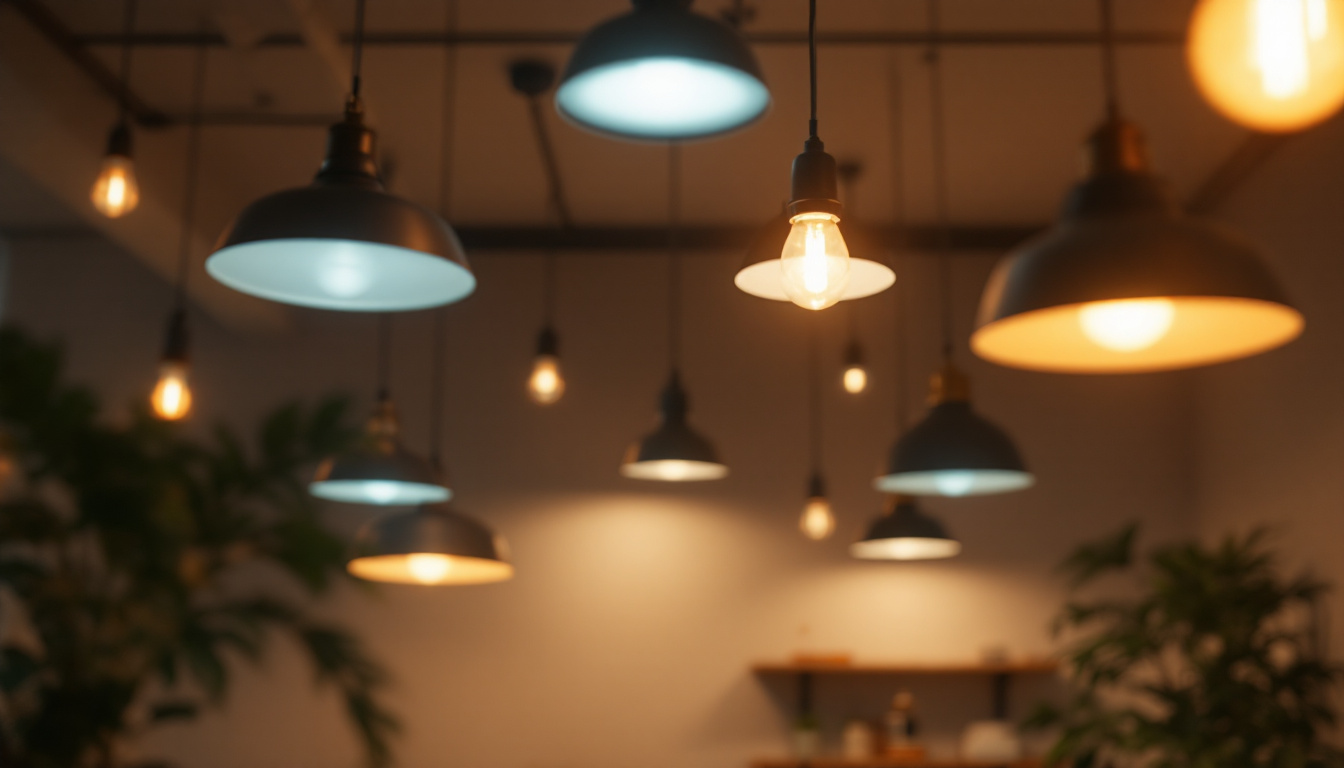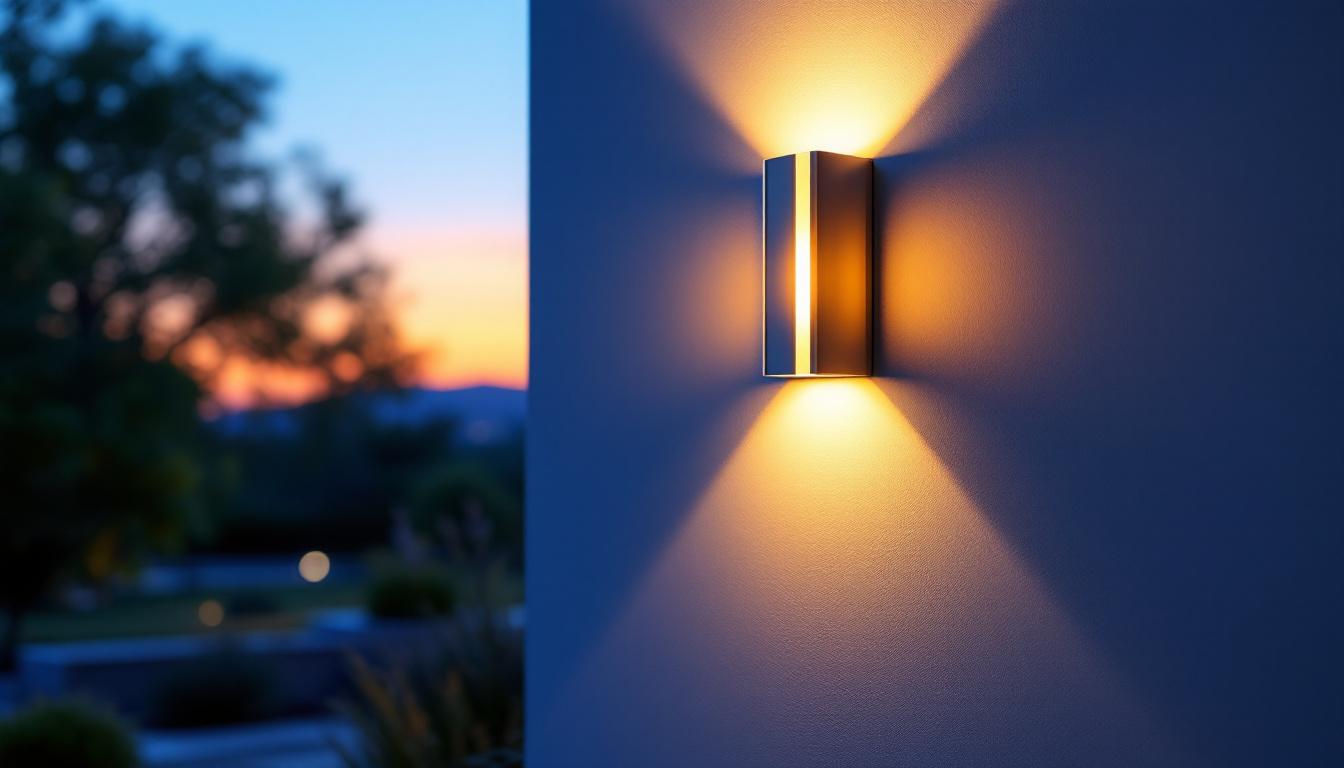
In the world of lighting design, bathrooms present unique challenges and opportunities. As a lighting contractor, understanding the nuances of bathroom bulb lights is essential for creating functional and aesthetically pleasing spaces. This article delves into the various aspects of bathroom lighting, including types of bulbs, installation tips, and safety considerations.
Bathrooms are multifaceted spaces that require careful consideration when it comes to lighting. The right lighting can enhance the functionality of the space while also contributing to its overall ambiance. Factors such as size, layout, and the specific tasks performed in the bathroom play a significant role in determining the appropriate lighting solutions.
When designing bathroom lighting, it’s crucial to incorporate different types of lighting to achieve a well-rounded effect. The three primary types of lighting are ambient, task, and accent lighting.
Ambient lighting serves as the general illumination for the entire bathroom. This can be achieved through ceiling-mounted fixtures, recessed lighting, or wall sconces. Task lighting, on the other hand, is focused on specific areas where activities such as shaving or applying makeup occur. This is typically provided by vanity lights or sconces placed on either side of the mirror. Finally, accent lighting adds visual interest and highlights architectural features or decorative elements, enhancing the overall design. For instance, a well-placed LED strip under a floating vanity can create a modern aesthetic while also providing a soft glow that enhances the overall atmosphere of the space.
Choosing the right bulbs for bathroom lighting is critical. LED bulbs are increasingly popular due to their energy efficiency and long lifespan. They are available in various color temperatures, allowing contractors to create the desired atmosphere. For instance, warmer tones can create a cozy and inviting feel, while cooler tones can provide a more invigorating environment.
Another option is fluorescent bulbs, which are also energy-efficient but may not offer the same quality of light as LEDs. Incandescent bulbs, while providing excellent color rendering, are less energy-efficient and have a shorter lifespan, making them a less desirable choice for modern bathrooms. Additionally, it’s important to consider the dimming capabilities of the bulbs, as having adjustable lighting can greatly enhance the versatility of the bathroom. Dimmers allow for a softer light during relaxing baths or a brighter setting for detailed grooming tasks, making the space adaptable to various moods and needs. Furthermore, integrating smart lighting systems can provide even greater control, enabling homeowners to adjust brightness and color temperature with just a touch or voice command, seamlessly merging technology with functionality in the bathroom setting.
Proper installation is key to ensuring that bathroom lighting functions effectively and safely. Lighting contractors must be aware of specific guidelines and best practices when installing fixtures in these spaces.
The height and placement of light fixtures can significantly impact their effectiveness. For vanity lighting, fixtures should be installed at eye level, typically around 65 to 70 inches from the floor. This height ensures that the light is distributed evenly across the face, minimizing shadows and providing optimal visibility for grooming tasks.
In addition to height, the placement of fixtures should be carefully considered. Wall sconces should ideally be positioned 28 to 36 inches apart to provide balanced lighting. For overhead fixtures, it’s essential to ensure that they are centrally located to distribute light evenly throughout the space. Furthermore, utilizing dimmer switches can enhance the versatility of the lighting, allowing users to adjust brightness levels according to their needs, whether for a relaxing bath or a bright, invigorating morning routine. Incorporating layered lighting, which combines ambient, task, and accent lighting, can also enhance the overall aesthetic and functionality of the bathroom.
Bathrooms are inherently moist environments, which necessitates adherence to specific safety regulations. Lighting fixtures must be rated for damp or wet locations, depending on their proximity to water sources such as showers or sinks. This rating ensures that the fixtures can withstand humidity and prevent electrical hazards.
Additionally, it’s important to install GFCI (Ground Fault Circuit Interrupter) outlets in bathrooms to protect against electrical shock. These outlets automatically cut off power if they detect any imbalance in the electrical current, providing an extra layer of safety. Beyond GFCI outlets, it’s wise to consider the use of moisture-resistant materials for any exposed wiring or electrical boxes. This proactive approach not only enhances safety but also prolongs the lifespan of the electrical components in a bathroom setting, where moisture can lead to corrosion and deterioration over time. Regular maintenance checks can further ensure that all fixtures remain in good working order, safeguarding both the functionality and safety of the lighting system.
Staying updated on design trends can help lighting contractors provide clients with modern and stylish options. Bathrooms are increasingly becoming personal sanctuaries, and lighting plays a crucial role in creating that atmosphere.
Smart lighting is a growing trend in residential design, including bathrooms. Homeowners are looking for ways to integrate technology into their spaces, and smart bulbs or fixtures can offer convenience and customization. These solutions allow users to control lighting via smartphone apps or voice commands, adjusting brightness and color temperature to suit their preferences.
Incorporating smart lighting can also enhance energy efficiency, as homeowners can schedule lights to turn on and off based on their routines. This feature not only saves energy but also adds a layer of security, as lights can be programmed to simulate occupancy when homeowners are away.
Layering lighting is another trend that enhances both functionality and aesthetics in bathroom design. By combining ambient, task, and accent lighting, contractors can create a dynamic and inviting atmosphere. For instance, using dimmable fixtures allows homeowners to adjust the brightness based on the time of day or activity, providing versatility in the space.
Accent lighting, such as LED strips under cabinets or around mirrors, can add a modern touch while also enhancing safety by illuminating pathways. This layered approach not only improves usability but also elevates the overall design of the bathroom.
The color temperature of bathroom lighting can significantly influence the mood and functionality of the space. Measured in Kelvin (K), color temperature ranges from warm (around 2700K) to cool (above 5000K). Understanding how to select the appropriate color temperature for different areas of the bathroom is crucial for lighting contractors.
Warm lighting, typically around 2700K to 3000K, creates a cozy and inviting atmosphere. This is often preferred for areas where relaxation is key, such as soaking tubs or spa-like showers. On the other hand, cooler lighting, ranging from 4000K to 5000K, is ideal for task-oriented areas like vanities, where clarity and visibility are essential for grooming activities.
Contractors should also consider the natural light available in the bathroom. If the space has ample natural light, a cooler color temperature may complement the existing light during the day. Conversely, in bathrooms with limited natural light, warmer tones can help create a more welcoming environment.
The Color Rendering Index (CRI) is another important factor to consider when selecting bulbs for bathroom lighting. CRI measures the ability of a light source to accurately render colors compared to natural light. A higher CRI (above 90) is ideal for bathroom lighting, as it ensures that colors appear true and vibrant, which is particularly important for tasks like makeup application.
As energy efficiency becomes increasingly important, lighting contractors must prioritize sustainable practices in their designs. Bathrooms, often overlooked, can benefit greatly from energy-efficient lighting solutions.
LED bulbs are the gold standard for energy efficiency, consuming significantly less energy than traditional incandescent or fluorescent bulbs. They also have a longer lifespan, reducing the need for frequent replacements. By recommending LED fixtures, contractors can help homeowners save on energy costs while also reducing their environmental footprint.
In addition to using LED bulbs, contractors can also consider fixtures that are designed with energy efficiency in mind. Look for products that are ENERGY STAR certified, as these meet strict efficiency guidelines and can further enhance the sustainability of bathroom lighting designs.
Proper disposal of old lighting fixtures and bulbs is another aspect of sustainability that contractors should address. Many communities have recycling programs for fluorescent and LED bulbs, which contain materials that can be harmful if not disposed of correctly. Educating clients on recycling options can enhance a contractor’s reputation as a responsible and environmentally conscious professional.
Bathroom bulb lights are a vital component of effective lighting design, and understanding the intricacies involved can set lighting contractors apart in a competitive market. From selecting the right types of bulbs to ensuring proper installation and adhering to safety regulations, every detail matters.
By staying abreast of design trends, understanding the impact of color temperature, and prioritizing energy efficiency, contractors can create bathrooms that are not only functional but also beautiful and inviting. As homeowners increasingly seek to enhance their bathroom spaces, the knowledge and expertise of lighting contractors will be essential in delivering exceptional results.
Ultimately, the goal is to create a harmonious balance between aesthetics and functionality, ensuring that each bathroom lighting solution meets the unique needs of the homeowner while adhering to best practices in the industry.
Ready to elevate your bathroom lighting designs with the best in spec-grade lighting products? Look no further than LumenWholesale for all your lighting needs. With our unbeatable wholesale prices, free shipping on bulk orders, and a commitment to quality and affordability, you can confidently meet the unique needs of every homeowner. Transform your lighting projects with the perfect blend of functionality, style, and value at LumenWholesale – your partner in achieving exceptional lighting solutions.

Discover innovative ways to enhance your lighting solutions with parking lights.

Discover the perfect lighting for your space with expert insights from top lighting contractors.

Discover the comprehensive guide to mastering RGB lighting with “RGB Light 15: The Ultimate Handbook for Lighting Contractors.” Uncover expert tips, innovative techniques, and essential tools to elevate your lighting projects and stay ahead in the industry.

Discover expert tips and best practices from lighting contractors on selecting and installing LED wall sconces for outdoor spaces.